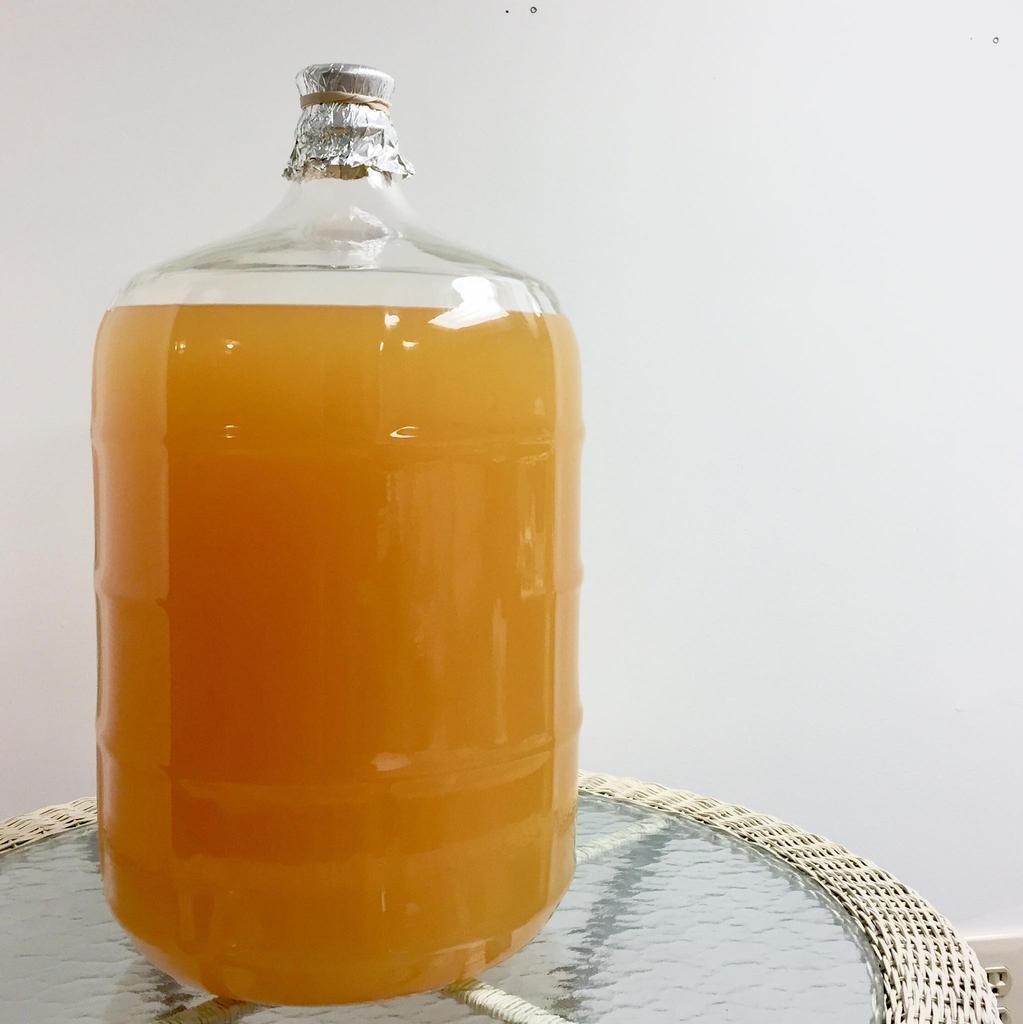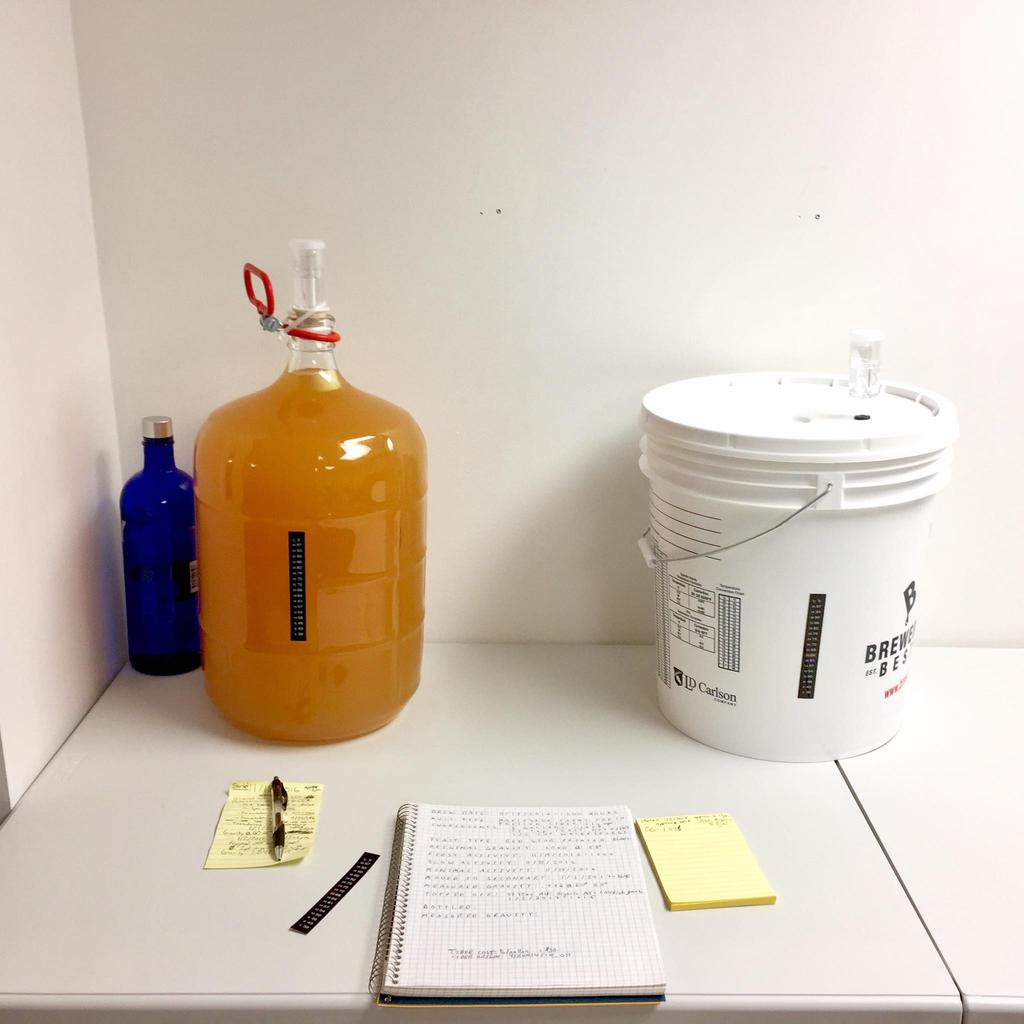Hi everyone, new here with a question about my first cider.
I started my first batch of cider of 11/18/2016 using UV pasteurized fresh-pressed cider from a local orchard.
Mixed O.G. was 1.050, used 1 pack of Red Star Champagne (Premier Blanc I think it's called now) Yeast and 2.5 tsp yeast nutrient.
I racked it to secondary on 1/1/2017 and took a sample to measure, gravity measured at .996 - it tasted pretty good too, a little yeasty but not bad at all.
All was well until I tried to put the airlock on the 5 gallon glass carboy. I didn't want to dry the Starsan solution off for fear of contamination, so it kept popping out of the carboy. Being new at this, I pushed it in a little further and into the carboy it went. No biggie, it was sanitized. I covered the carboy opening and neck with sanitized foil for the night.
On 1/2/2017 I grabbed a few new bungs and got back to it. However I was concerned about the amount of o2 I introduced, especially since the carboy had a lot of headroom and the cider sat in primary for so long and I didn't think it would be churning out much more co2.
I topped it off with about 57.75 oz of preservative-free organic apple juice (O.G 1.048) from an unopened container, hoping this would kick up some co2 production and protect the cider.
It's been about 28 hours and there's no activity in the airlock or signs of fermentation in the carboy. In fact, vodka is being pulled up the center tube of the 3-piece airlock. Our basement drops a few degrees during the day while we're out so I've been fighting this. I didn't expect in in the glass carboy with so little headroom though.
I wouldn't be too concerned, except I started a second batch in primary using 5.5 gal of organic apple juice (ceteris paribus) after topping off the secondary and getting the airlock sorted. That batch is already lifting the center piece of the airlock (no bubbles yet that I've noticed). I expected the dormant yeast in the first batch would coming back for the new sugar long before the second batch started fermenting, but maybe I'm wrong?
I don't want to lose my first batch and I'm freaking out a bit.
I found this thread which helped some:
https://www.homebrewtalk.com/showthread.php?t=91387
But I'm looking for advice from those who may have been here before.
Should I add a little bit of yeast to the batch in secondary? Maybe just some yeast nutrient?
Am I worrying too much and it'll be fine if I leave it be?
Thanks in advance!
I started my first batch of cider of 11/18/2016 using UV pasteurized fresh-pressed cider from a local orchard.
Mixed O.G. was 1.050, used 1 pack of Red Star Champagne (Premier Blanc I think it's called now) Yeast and 2.5 tsp yeast nutrient.
I racked it to secondary on 1/1/2017 and took a sample to measure, gravity measured at .996 - it tasted pretty good too, a little yeasty but not bad at all.
All was well until I tried to put the airlock on the 5 gallon glass carboy. I didn't want to dry the Starsan solution off for fear of contamination, so it kept popping out of the carboy. Being new at this, I pushed it in a little further and into the carboy it went. No biggie, it was sanitized. I covered the carboy opening and neck with sanitized foil for the night.
On 1/2/2017 I grabbed a few new bungs and got back to it. However I was concerned about the amount of o2 I introduced, especially since the carboy had a lot of headroom and the cider sat in primary for so long and I didn't think it would be churning out much more co2.
I topped it off with about 57.75 oz of preservative-free organic apple juice (O.G 1.048) from an unopened container, hoping this would kick up some co2 production and protect the cider.
It's been about 28 hours and there's no activity in the airlock or signs of fermentation in the carboy. In fact, vodka is being pulled up the center tube of the 3-piece airlock. Our basement drops a few degrees during the day while we're out so I've been fighting this. I didn't expect in in the glass carboy with so little headroom though.
I wouldn't be too concerned, except I started a second batch in primary using 5.5 gal of organic apple juice (ceteris paribus) after topping off the secondary and getting the airlock sorted. That batch is already lifting the center piece of the airlock (no bubbles yet that I've noticed). I expected the dormant yeast in the first batch would coming back for the new sugar long before the second batch started fermenting, but maybe I'm wrong?
I don't want to lose my first batch and I'm freaking out a bit.
I found this thread which helped some:
https://www.homebrewtalk.com/showthread.php?t=91387
But I'm looking for advice from those who may have been here before.
Should I add a little bit of yeast to the batch in secondary? Maybe just some yeast nutrient?
Am I worrying too much and it'll be fine if I leave it be?
Thanks in advance!
Last edited:




